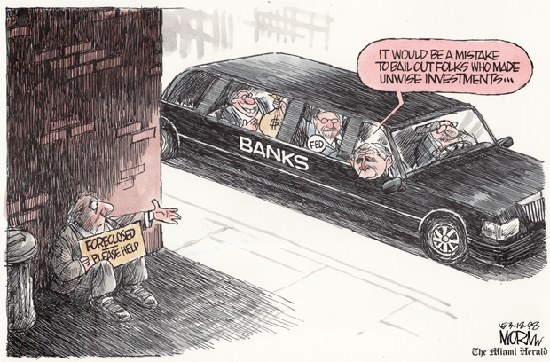The Capital Asset Pricing Model Narach Investment
Post on: 22 Сентябрь, 2015 No Comment

The Capital Asset Pricing Model would find its beginnings in work done in this regard by William Sharpe; and later attended upon by Markowitz, while attempting to explain how assets should be priced in the capital markets. This was undertaken while deriving the relationship between the expected return and systemic risk pertaining to individual securities (including stocks) and portfolios. However, capital market theory would be relevant to how asset pricing should occur if the investors were to behave in a fashion suggested by Markowitz.
The assumptions underlying the capital market theory would be as listed below:
1. Investors base their investment decisions based on risk-return assessments. These expectations are based on expected value and standard deviation.
2. The purchase and sale of stocks can be done in infinitely divisible units. That is an investor could purchase INR 1.00 of say ACC stocks.
3. Investors can short sell any amount of stocks without any limit.
4. The purchase and sale of stocks by a single investor cannot effect the price of that stock. This would imply perfect competition, where the actions or otherwise of all investors would determine prices of stocks; failing which a monopoly condition would come to pass to influence stock prices accordingly.
5. There are no transaction costs. Where there are such costs, returns to the investor would be sensitive to whether the investor owned the stock or security before the decision period under study.
6.The purchase and sale of securities and stocks is done by the investor in the absence of income tax considerations. Implying an indifference to the form of return received; whether capital gains or dividend income.
7. The investor can both lend and borrow funds of any amount desired at the same riskless rate.
8. Investors are expected to have identical expectations with respect to their decision period under study. Implying that the investors would have the same investment horizon, with identical return expectations, its variance and thus the covariance of all pairs of securities.
Although, the assumptions listed above seem unreasonable, they do help describe prices in the capital markets well without distorting reality on the ground.
It would be fair to state that all investors would be faced with an efficiency frontier; which would differ for each of them based on their individual expectations of return. Further, lending would be an investment in a security like a savings bank account, a fixed deposit at a bank or a high grade debt instrument; while borrowing maybe thought of as using margins. Both of which would transform the efficiency frontier into a straight line.
Let’s say that an investor can lend at a rate Rf = 0.06 (the fixed deposit rate) which would represent a risk free investment. Now, an investor can place all or a part of his funds (or investment capital) at this riskless rate. If he places only a part of his funds at this rate and the rest in a portfolio of riskier securities along the efficiency frontier, then he could generate portfolios along this straight line segment. The equation that would represent this expected return on his portfolio would be:
Rp = XRm + (1X)Rf
(Where, Rp = expected return on the portfolio; X = percentage of funds invested in a risky portfolio; (1X) = percentage of funds invested in riskless assets; Rm = expected return on risky portfolio; and Rf = expected return on riskless assets); and
p = X m
(Where, p = expected standard deviation of the portfolio; X = percentage of funds invested in the risky portfolio; and m = expected standard deviation on the risky portfolio).
The equations and the results thereof would imply that the investor has effectively reduced both the return as well as the risk with regard to the portfolio held by him. there is also the possibility that the investor would borrow funds to augment his investment capital. Which would require a consideration of the possibilities associated with the total funds being enlarged through trading equity.
If X is the percentage of the investment capital placed in the risky portfolio, then there would be three scenarios for study; namely:
X = 1; investment capital is fully invested in the risky portfolio.
X 1; a part of the investment capital is invested in the risky portfolio.
X 1; would imply that the investor has borrowed funds to augment the investment capital under his charge.
It would be easier to understand in the rewriting of the above equation:
Rp = XRm (X1)Rf
(Where, Rf would be the borrowing rate and not the risk free rate. Thereby, the leveraged portfolio would provide an increased return at an increased risk).
The investor would thus be faced with an investment decision with regard to the optimal combination of risky securities on the new efficiency frontier; while the financial decision would pertain to whether to lend (buy risky securities) or borrow (leverage the portfolio). This would suggest that the risk level desired by the investor would be achieved through this optimal portfolio on the efficiency frontier on the one hand combined with lending and borrowing on the other.
If all the investors were to have the same expectations and similar (if not identical) lending and borrowing rates and the portfolio of risky assets held by any one investor would be identical to portfolios held by other investors, then at equilibrium it would be the market portfolio; which by extension would comprise of all risky assets. It may be observed here that, each asset held in the portfolio by an investor would be in the same proportion that the market value of the asset represents to the total market value of all risky assets; which would be represented by the capital market line and all investors would end up with efficient portfolios along this line. Of course, the portfolios which are not efficient would lie somewhat below it. The equation for the Capital Market line would be as given below:
Re = [(Rf + Rm Rf) m] e
Where, e would represent the efficient portfolio. And the term [(Rm — Rf) m] would be the extra return gained by increasing the level of risk (standard deviation) on an efficient portfolio by one unit. The Rf would be the price of time; that is, it is the price paid for the delay in consumption for one period of time. Thus the expected return on an efficient portfolio would be:
(Price of time) + (Price of risk) (Amount of risk)

The investor would need to go beyond the above equation to attend on returns from non-efficient portfolios and individual securities. Further, the investor would appreciate that for a well diversified portfolio, the non-systemic risk would be nil or tend towards it. thus, the only relevant risk would be systemic in nature and measurable by the beta. By extension, the investor would be concerned with the expected return on the one hand and the beta on the other; and all investments and portfolios would lie in the return to beta space. The equation for this also called the Security Market Line would be represented by:
Ri = + bi
The first point on the line would be the riskless asset with a beta of zero.
Rf = + b(0)
Rf =
The second point on the line would be the market portfolio with a beta of one.
Rm = + b(1)
Rm = b
(Rm Rf) = b
Combining the two results given above would give us the security market line represented by:
Ri = Rf + (Rm Rf)
This would be descriptive of the expected return for all assets and portfolios, efficient or otherwise. Thus, there would be a linear relationship between the expected return and the beta.
It would be quite in order if the investor were to relax some of the assumptions underlying the capital asset pricing model; as some of them seem unreasonable and untenable and appropriate modifications would be suitable. For instance, the borrowing rate would be higher than the lending rate; and income tax would be required to be brought into the picture with respect to ascertaining a realistic rate of return.
Although, the capital asset pricing model was developed with unrealistic underlying assumptions to start with, the Security Market Line equation may not be representative of investor behavior and the expected rates of return. There may also exist circumstances in which investors may not have fully diversified their portfolio, thus exposing it to non-systemic risk. This would also imply that the beta may not be adequate as a risk measurement tool. The beta should be applied to ascertain the market risk pertaining to stocks held in an investors portfolio. However, the beta available is based on historical data; therefore the validity of a present and estimated future beta would be based on the stability of the beta over time with respect to the historical data available in this regard.
For these reasons amongst others the capital asset pricing model may not be valid in its entirety, and the security market line equation may not give an accurate measure of the return on investment. Thus, this model must be tested and validated before it can be applied with any level of confidence in real time investment programs. The capital asset pricing model would be important as a conceptual model in its present form; but, the investor must appreciate that all the input data available is historical in nature, while this input data should be ex-ante.














